Translated by Berenkova Violetta Michailovna
(unedited text)
https://chispa1707.ussr.win/3259
James Kenneth from California University (Santa Barbara) has pretty much proven that the most recent glaciation was caused by a meteorite fall [1]. Myself, after having read the A.P. Nevsky’s paper [2], raise a different issue: there is a number of closely connected both natural phenomena and events from human history that we can explain only as having one and the same origin, and namely: a close passing by of a meteorite like object. Let us consider all these phenomena and events one by one and in their interrelation.
PLEISTOCENE AREA
The northern border of the Pleistocene fauna area is clearly visible.
Fig. 1. The area of mammoths distribution [3]
It is an ellipse with the centre to the south-west of Greenland.
Fig. 2. Northern boundary of the mammoths distribution area [4]
The elleptical form of the Hudson Bay is very well explained as a catastrophe product [5]; paleontologic remains are most likely washed off, and as a matter of fact the zone might have looked like a circle with the centre in Greenland. Please, note that mammoths prospered in Beringia (aka Bering Land Bridge) which is slightly off to the East from Taimyr; this area is seen as sunken sea shore shelves located to the South from the above mentioned ellipse [6]. The maps below (though of a smaller measure) acknowledge the same fact that the center is in Greenland.
It’s necessary to point out one important fact. Sporadically found mammoths remains throughout Greenland can only be explained as scattered during a catastrophe.
Fig. 3. Zone of mammoths distribution (Beringia included) [6]
SOIL ZONES
There is a well known northern hemisphere soil zones map by V. Dokuchaev published in 1899 [7]; that map shows both arctic and forest zones as circles with two different centers: one center is in The North Pole and the other one is in Greenland. This means there are two groups of latitude zones related to two different locations of the North Pole.
Fig. 4. Doubling of soil zones of Northern hemisphere
In 1883 V. Dokuchaev published a map of Russian black earth [8]. Latitude layout of the Russian black earth belt suggests that the North Pole was in Greenland. The belt finishes in north-western Africa.
Fig. 5. Latitude orientation of black earth
Modern European and Northern American soil maps also suggest that the North Pole was in Greenland by their latitude orientation [9].
Fig. 6. Latitude orientation of soils to the North Pole in Greenland
The fact that soil formation requires guite a long period of time allows us to assert that latitude orientation of soils in northern hemisphere is relict by origin and is the reflection of the previous location of our North Pole.
Good correlation between the Pleistocene fauna zone and the relict soil orientation points towards higher probability that collaps of that fauna is related to the displacement of the North Pole to its current location. Well, the major researchable relict inherited to us from those times is the deepfrozen soil, permafrost.
PERMAFROST ZONE
The permafrost zone bears the shape of a drop with its sharp end in Hudson Bay and the blunt end in Siberia. The symmetry axis passes through the Lena river mouth, which is well-known for the Pleistocene era finds plus it’s also famous for the most significant salinization of sedimentary rocks found in the North [10]. The center of that drop lies on that very line that connects the current North Pole and Greenland’s middle; the northern border of mammoths population plus minimum three different soil zones are oriented towards this Greenland’s middle as if it were the North Pole.
Fig. 7. Permafrost zone [11]
Please, note that the above mentioned drop is limited by oceans in its width and by continents in its length.
The sunk sea shore shelves mimic this form because it is that very Beringia that perished basically synchronically with mammoths fauna.
Fig. 8. Outline of shelves borders
My personal inference from all these facts mentioned above is as following: Beringia’s submergence, permafrost emergence, and the North Pole shift, – all of these events have the same root cause. And this cause is as catastrophic as it only can be.
ASSESSING THE CATASTROPHE SCALE
Permafrost on our planet is found only in the northern hemisphere except for some cases of alpine deepfrozen soil. This fact points to an outer to our planet root cause. This cause can be a meteorite. If we take a closer look at the dark area on that map (the map legend says it is permafrost area) we will clearly see that the drop is asymmetric, i.e. bisectors between permafrost borders on the left and on the right do not coincide. We have a case of the curvilinear trajectory.
Fig. 9. Permafrost Outlines“ Curvature
This kind of trajectory can happen due to planet’s rotation while contacting something that is moving rectilinearly. Permafrost zone starts emerging in Canada horizontally and finishes beyond the lake of Baikal at 22° angle to the input line. This means that during the time, when the object in focus was passing by, our planet turned 55,3° and accomplished 15.4% of its daily revolution. Which equals approximately 3.7 hours.
Rough estimate of the relative body speed:
Let’s assume that this object is a meteorite and estimate its speed.
12756 km (diameter of the Earth): 3.7 hours = 3460 km/hours or 0.96 km/s. It is 10 times less than the second space speed (11 km/s); any solid meteorite moving at this speed would have «fallen» to the Earth thus making the planet’s existence questionable while judging the size of our cosmic invader by the size of permafrost zone. Most probably our planet touched a continuous meteor shower; if this is the case we cannot estimate its speed.
Contact duration:
The contact lasted 3.7 hours. This is not too long: in 1833 our planet moved for 9 hours inside another meteor shower [12]. Here much depends on the entry corner into the shower.
Contact intensity:
In 1833 frequency of meteorites falling was 12-26 thousand per hour, and in 1946 it was 21-30 thousand per hour [13]. Ther are also other types of meteor showers observed by astronomers in outer space that experience wave processes and are dense enough to act as one solid body. To touch that kind of a shower equals to be abrased by a grinder.
Within the area where the Earth seemed to abandon the dangerous zone one can observe greater impact; this might have two reasons: exposure accumulation and the development of the effect with the increase of its intensity in time (for example, flux density or approach with its more dense part).
THREE IMPACT FACTORS
The first factor: the meteor shower which touched the Earth per se. There is a roundish formation in Hudson Bay measured at 433 kilometers in diameter which might be part of the event in focus. But it is difficult to estimate the number of separate meteorites landing within permafrost zone. The craters are covered by alluvial deposits developed during this event and specific to the deep freeze zone. The whole area in focus is in one part very well populated and in the other part it is very well researched by geologists which means that low number of crater findings cannot be the result of poor research efforts.
Fig. 10. The map showing location of found impact structures (meteorite craters) [14]
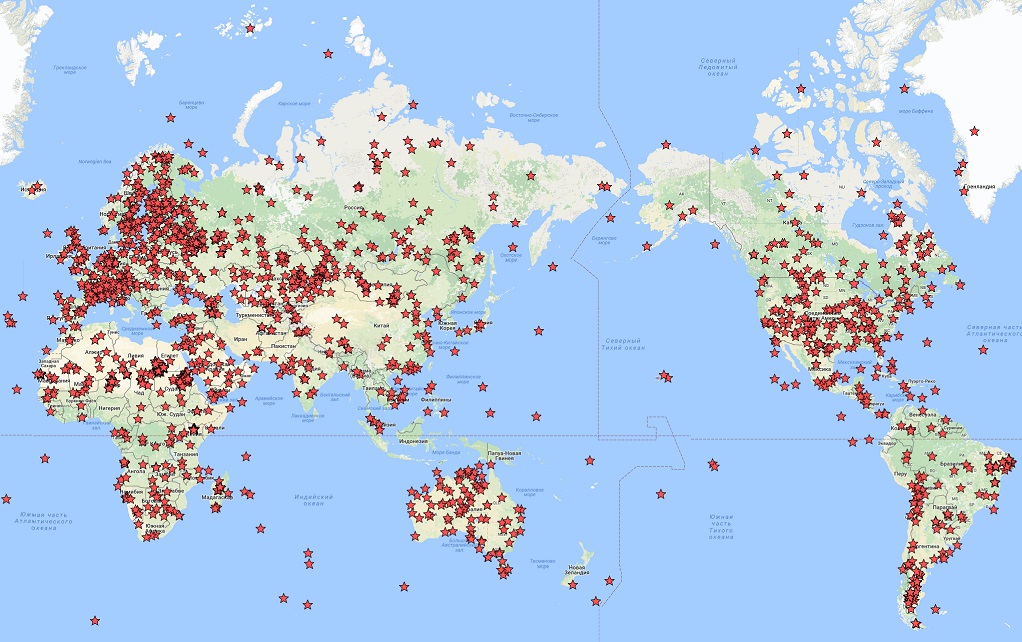
The second factor: the vacuum channel formed behind the bodies moving at supersonic speeds. The speed of meteor showers is usually between 11 and 72 km/s which is definitely supersonic.
Example: If we take a needle 1mm in diameter moving at 30km/sec the diameter of such a vacuum channel formed behind that needle will be not less than 10 sm in width. The length of that vacuum channel will be equal to half diameter of the discharging zone multiplied by the relation of its own speed to sound speed (let’s also approximate sound speed at 300m/sec) thus making no less than 5 metres [15].
Fig. 11. A body moving at supersonic speed
When calculated for a meteorite only 30 metres in diameter with the same speed as in our example above (30 km/sec) the diameter of the discharging zone is no less than 30 kilometers and the length of the vacuum channel is 15 thousand kilometres that is more than the Earth diameter (12.74 thousand in km).
Our stratosphere starts as high as 11-50 km from the surface of the Earth which means that the vacuum channel caused by a 30 metre wide meteorite will touch the planet’s surface if such a meteorite approaches planet’s stratosphere.
For the purposes of the event in focus we are dealing with a meteorite shower and, consequently, with billions of relatively small bodies moving at various heights yet at similar speed. This means that they create a multi-barreled channel.
The most immediate consequences of such a kind of channel are: there forms a blast wave at the entrance into planet’s atmosphere, then a number of periodic sound waves, and another blast wave on the channel’s collaps. The major consequence is focal drops of the atmospheric pressure.
The third factor: the electrical and electromagnetic impact of a meteor shower on the Earth. The most suitable reference for this matter is the article by A.P. Nevskiy “The phenomenon of a positively stabilized electrical charge and the effect of electric discharge explosion of large meteoritic bodies moving in the atmosphere of planets” published in “The Astronomical bulletin” (1978, volume 12, № 4) [2].
Bio info: Nevskiy Alexander Platonovich (1935-2005), Cand. Sc. (Physics and Mathematics). The leading research assistant, FGUP CNNIIMash, the Russian Aerospace Agency.
Nevskiy’s theory was born as a result of struggling against effects of plasma shielding radio waves emited from landing space vehicles which makes it strongly tied up to real life practice. As a result all «secrets of the Tungus meteorite» have been cracked by the Soviet space science in 1963.
IMPACT OF ELECTRIC DISCHARGE EXPLOSION ACCORDING TO A.P. NEVSKIY
The electrical dipole is formed in a comet: a condensed positive charge is located on its surface and a diffused negative charge placed in its plasma tail. The positive charge stabilizes and grows up to a significant size. If the comet passes by the Earth close enough then a huge potential difference between the charges appeares which can cause break through the air. Under standard conditions a super-powerful multi-barreled discharge may happen starting from the height of 25 kilometers.
Pre-breakdown electrical fields induce electrostatic levitation, which explains registered phenomena like rising of large objects (such as trees, yurtas, patches of soil) into the air. The most powerful light flash accompanies the breakthrough while the areas with moist soil give birth to corona discharge.
Channels of breakdown come in hundred thousands by number; one can also register hard x-ray radiation as well as neutron radiation, the latter being a result of reaction of deuterium nuclear fusion.
High-altitude explosion caused by an electric discharge leads to destruction of a meteorite with the transition of some of its part into vapor and dust. The meteorite blows up from its underside directed towards the planet, and therefore both itself and its large debris receive a high-power impulse in the direction away from the planet“s surface.
There are three shock waves. The first shock wave starts from energy release product that looks like a lightning bolt. The second wave accompanies explosive destruction of the body. The third one is a ballistic wave from supersonic intrusion of the body into the atmosphere.
Electrical currents that spread along water-bearing layers in the ground heat up water and results in formation boiling reservoirs and huge geysers.
Direct hit of meteoric bodies to the Earth is not considered in this article. The last two factors mentioned above are quite enough for the explanation of the whole set of issues in focus.
STAGES OF THE CONTACT
We have already decided that there was a meteorite shower that passed by close to the planet rather than a single solid body; this circumstance bears its own subtleties.
The first blast wave resulted from the electric discharge was multiple and did not stop for the whole duration of the contact, i.e. for 3.7 hours. The second blast wave was also multiple and is taking place simulteneously with the first one as billions of little bodies explode in turn as they enter the planet’s atmosphere. The second wave also lasts the same 3.7 hours. The third blast wave is ballistic by nature and comes with a several minutes delay which makes a difference.
PERMAFROST FORMATION
The discharge turns the Earth into a cathode and the meteor shower into an anode. The Earth-cathode loses electrons in the place of the contact (Arctic zones) and particles in both the ocean and in the ground get ionized in large quantities and very quickly. The ionization process is endothermic [16]; it proceeds with heat removal so that all solids and all water effected in the discharge zone lose their temperature. The second most spread element on the Earth (after oxygen) is hydrogen, and it is also the best prospect for mass ionization.
Ionized hydrogen becomes “proton gas” and obtains the highest permeability. The endothermic reaction of restoring oxides (metals, in particular) from oxides goes down as deep as 1.5 km into the ground. There develop fields of metal deposits, and rocks freeze through.
Within layers of mineralized waters electrolysis takes place, which is an endothermic process as well.
Generally speaking, these three processes are most responsible for permafrost emergence, including the plutonic one, e.g.: in Poland and the Czech Republic [17; 18; 19].
DECAY OF GAS HYDRATES OF OCEAN
The water permeate layers of the ground contacting the ocean act like a tray with an electrolyte where the edge coming into the ocean is the anode; this is why it is heated up (Anodic electrolytic heating). Layers of gas hydrates of the coastal zone while contacting to the heated water-bearing layers break up in an explosion with heat removal [57].
As soon as the ocean is an electrolyte and supports transferring the electrical charges one would expect some chain reaction of heating and decay of gas hydrates along the edges of all continents.
The released hydrocarbons’ volume exceeds the volume of the initial gas hydrate by 160-180 times which causes marine water to foam.
The continuous electric discharge initiates the process of electrocracking of the natural gas released from hydrates [20] with formation of one acetylene volume part and about three volume parts of hydrogen. The resulting gaseous mass volume is quadrupled.
Acetylene breaks down into carbon and hydrogen rapidly and in large quantities.
GREENHOUSE EFFECT PREVENTION
Decay of products of decay of gas hydrates prevents methane emission into the atmosphere, appearance of greenhouse effect and extinction similar to the Permian–Triassic extinction event.
COOLING OF THE RISING MASS
Water and gases rising from the bottom to the surface get into the zone with much smaller pressure that causes deep cooling. Water is transformed into ice crystals and increases 9% in volume. The weight density of this ice masses reduces and its mobility increases. The temperature of the released gases drops also. Pressure decrease finishes up the decay of those fragments of gas hydrates that have not broken up as a result of electric discharge.
NEAR-BOTTOM RELOCATION OF WATER
Products of the gas hydrates decay increase in volume by 600-700 times and begin rising upwards; dense and heavy waters from the nearest areas take their place. There starts a near-bottom water surge with the movement direction from the centre of the Arctic Ocean to the coastline.
BALLISTIC SHOCK WAVE
The ballistic shock wave comes when electrochemical processes are already launched. The blow tears off soil (which is, probably, already weakened by electrochemical processes) in Canada and Siberia and extrudes already sated with gases and ice crystals water of the Arctic Ocean. The suspension of water, ice, soil particles and gases, partially ionized, is formed in the atmosphere.
Detonation of hydrogen and oxygen takes place in those areas where their ratio is optimum. According to our model after detonation occures over Canada all the suspended mixture is thrown out to Siberia by the ballistic wave.
New formed gases either detonate, or blow up, or simply burn, and a similar set of events happenes again at the end of the process of the meteor shower passing.
PERIODIC WAVES
During all the 3.7 hours of the contact the meteorite flow carries periodic shock waves specific for a body moving with supersonic speed while beating on the laid water-soil mix. As the Earth turns around the directions of the periodic waves shift to the west.
NATURE OF SIBERIAN PRECIPITATION
All that slurred suspended mixture thrown onto Siberia is partially ionized and very cold. Due to a recurrent pressure decrease there happens distillation process even of substances that normally are thought of as non-volatile; the pressure decrease starts in the ocean and continues untill the detonation stops [59].
At the same time electrical discharges do not stop which adds more ionisation and our suspended mix cools down even more. As a result the suspension is rather lax, sated with gas bubbles and soil dust, vapor and ice crystals; all this makes it mobile like a snow avalanche; thus it can simulate glaciation with ice shields 4 kilometers thick. The same mixture helps mammoths fast deep freezing and adds to permafrost emergence.
SEDIMENTARY COAL
James Kenneth described layers of saturated carbon [1]; this might have happened if there was a local spot with little oxygen. Hydrogen binds to oxygen more actively than carbon; after the decay of gas hydrates there might be some extra carbon that had nothing to bind to, so this extra carbon precipitated as it was: pure carbon.
CONNECTION OF GAS HYDRATES WITH THE CONTINENTS
Deposits of gas hydrates are located along the edges of continents, so that is their source.
Fig. 12. Location of gas hydrates deposits [21]

One of the reasons that deposits are at the sea shore is the difference in pressure at the sea bottom and deep within the continent is registered at 2-2.5 times if we take the same deposits depth; this pressure difference is enough to extrude those continental natural gases towards the sea like toothpaste from its tube. And the sea has created conditions for turning gases into hydrates. The exact location of certain deposits mainly depends on the sea currents.
Now, sometimes there is a phisical connection between gas hydrates deposits at the sea bottom and the natural gas from the ground where the latter serve as the continuous supply source for the former; in this case the process of gas electrocrecking has to keep going and shift from the sea into the ground depths so that to continue inside the deposits.
There is one more scenario when electrical charges effect inground deposits of both gas hydrates and natural gases directly (not from the sea shore). In this case gases start their decomposition while giving away heat; the rest happens according to usual patterns.
ELECTROCRACKING OF NATURAL GASES IN THE GROUND
The circumstances of the continental grounds are different from those of the sea bottom: natural gas from the ground does not have room to move around. Hydrogen is one of the most volatile elements; after hydrate gets electrocuted hydrogen breaks away free and its molecules bond into something with much less hydrogen content, for example: oil alcans and alcalens.
Oil synthesis happens much better within the solids that have better conductivity. Any electrical charge is quite finite; this is why oil synthesis decreases from the sea shores towards continents’ center.
One cannot find oil nor gas in the mountains where the native brine layers are damaged. And, on the contrary, on the plains from the Yamal Peninsula to the Caspian Sea there is a lot of oil; plus the surfaces have sagged down as a a result of that synthesis.
ACCRUING DEPTH OF FROST PENETRATION
Depth of the permafrost increases as it is closer to shelves. On edges of the continents all reactions were most intense, the attenuating character of the processes helped to complete these reactions (the attenuation vector is directed from the shore inside the continent).
ABOUT LOCALITY OF PERMAFROST
Sea shelves sank everywhere while permafrost is found only in subpolar zones. These zones demonstrate much more intensity of their electromagnetic field than equatorial zones. Thus the former zones must get much more stronger electrical discharge than the latter ones.
SAGGING OF THE EARTH CRUST
Oil density is twice the density of liquid natural gas; this means that oil synthesis is followed by decrease in the layer volume and, consequently, in sagging of the earth crust. As a result part of the earth crust sank; the closer to the continents edge the more it sank, and turned into sea shore shelf. Oil layers might reach 1100-1200 meters in thickness; if oil developed by the method described above (electrical cracking) then the earth crust sagged by a relative amount; that might have happened in more than one step.
Methahydrates decay of the cryolithic zone deep in ground is possible. If that decay happens as oil synthesis from gas then methanhydrates layers lose around 11% of their volume. As a result, cavities start forming, there happens focal pressure decrease, and decay of gas hydrates in the ground starts a chain reaction. Currently registered layers of gas hydrates are 400-800 metres thick; this would result in 44-88 metres crust shrink in case of such a scenario.
The crust sink have surely caused its cracking accompanied by gases release and even stronger cooling in the emission zone.
THE FINAL BLAST WAVE
A body moving at supersonic speed creates a vacuum channel right behind itself. In our case we are dealing with a huge channel made up from billions of tiny channels created by meterorites from the shower. After the planet exits this meteorite flow this vacuum channel has to collaps [56] thus causing the fourth blast wave; this fourth wave will somewhat resemble the previous ballistic wave. The shock vector points 22° more to the East and up to follow the extinguishing vacuum channel.
The final shock lifts up into the atmosphere some part of the ocean water and tears away part of the snow-soil bulk that has settled shortly before, and in the course of settling down again this mixture will clearly lag behind the Earth rotation, that is, it will be shifting to the West starting with speed of 500 km/hour and even slower.
THREE TYPES OF BLAST WAVES OVERLAPPED
This aspect is very important as it can be easily verified. We should be able to locate the traces of three types of ballistic blast waves in Siberia:
– the first one as a result of the explosive gas detonation: it pressed the stuff from the top and directed from Hudson Bay towards Yamal;
– the second one are periodic waves shifting 22° from West to East, from Yamal to the Lena river;
– the third type of wave that pressed stuff away towards the Lena’s mouth and powerful shift of the suspended water–soil mixture to the West [22]. This very wave left behind the clearest possible traces: ridge–hollow complexes.
Fig. 13. Ridge-hollow complexes [23]

DISPERSION OF THE WATER-SOIL SUSPENSION MIXTURE
The dispersion of a water-soil suspension is inevitable; it can result in separation of marine salt from water. The suspended mixture sets down according to the density of particles and current air flows. Probably, some salt deposits found today were formed that way.
VECTOR OF THE SUSPENSION SHIFT
The suspension moves irrespectively of the Earth rotation. After being sucked up to replace the vacuum channel that we discussed above this suspension mix acts like a vehicle stuck at a crossroads. Even after it hits the ground the mixture keeps its momentum for a while and therefore it shifts to the West. In Asia the mixture moves towards the Caspian Sea, then it moves down the Manych to the Black Sea (thus forming ice 30 pecha thick in the sea’s north [24], and in North America the mixture moves towards the Great Lakes, and later on moves into the the Great Basin in Nevada, aka Pleistocene lake). Please note that Nevada and Mangyshlak are located at the same latitude yet opposite longitudes, which points to the identical shock power and rotary symmetry of the motion.
Fig. 14., a Fig. 15. Identical landscapes both in Nevada and the Mangyshlak Peninsula [25]; [26]
REMAINS CARBONISATION
Total absence of marine mammals and fish in permafrost layers is important to note, though crumpled remains of marine fauna people regularly find in coal. It seems that the electric discharge caused in oceanic flora and fauna the phenomenon similar to IV degree electrical shock: ionised hydrogen migrates, and carbon stays entirely deprived of organics. The hydrogen which was torn off from molecules is found in deposits of oil, coal and combustible shale; copious amounts of hydrogen notably complicate mining.
The thrown into the atmosphere carbonised marine fauna and flora remains were carried by the hurricane differently from sand, ice or water, so they landed on the ground according to relative density, compactly.
The mammoths did not contact the oceanic water electrolyte, and they avoided charring.
EOLIAN PRECIPITAIONS
Some part of meteoric material and water-soil suspension gets into the stratosphere, then it moves along dominating airflows and drops in different places depending on relative density.
GLACIATION IN TROPICS
There is only one unanswered question: whether all shelves on the Earth sank synchronously. If «yes», then glaciation in tropics was a part of that general glaciation, and it followed almost the same, but not identical scenario. If «not», the glaciation in tropics occurred during a similar incident though a different one.
ICE SHIELD SIMULACRUM
According to the current article the settled water-soil suspended mixture settled in something that looked like an ice shield; at the same time the mainstream glaciology developed a number of views on recent glaciation that sounds exactly as our illation; here is what mainstream science asserts:
– glaciation developed rapidly in less than half a year [27];
– It disappeared quickly as it was washed away by high waters in several decades;
– It disappeared synchronously with the destruction mammoth fauna;
– It spared southern Pleistocene fauna, and that part of Russia which is populated nowadays;
– It moved boulders in some places uphill that presents difficulties for the current model;
– It was capable to move or not to move depending on the distribution of flows;
– Explains impossible Pleistocene temperatures (25°C below the present ones that equalizes the temperatures with Antarctic and excludes prosperity of herbivorous Pleistocene fauna), calculated on an isotope structure [28], – in this bulk there are these i
– Formes moraines;
– It rolles the boulders smooth using the method of fast piling of ledges on the surface of stones overcooled to outer space values (there can be minus 5°C inside the stone, while holding minus 200°C on the surface of the same stone). It is probably the source of appearance of ideally round stones.
– In some places (presumably, in the Mangyshlak) it forms resemblance of concretions, which are not concretions in fact, e.g.: a multilayered snowball or a snow–ice sphere in a surf band at the Yamal [60];
– It polishes off rocks in the North;
– It spares the fauna of tropics (Snowball Earth situation) when there were similar events: the overcooled mixture killes more selectively, than a general decrease in temperature;
– It explaines both sudden growth of glaciers, and their fast degradation;
– It creates fast thawing alluvial islands near floodplains of large rivers;
– It carries wood over all Arctic basin where one can still find it today;
– It formes that very type of cryosolic cells structure that exists now, and that happened quickly [29].
We can only supply two major additions to the mainstream theories, and in particular:
– there is no need in such huge ice thickness: up to 4 kilometers;
– glaciation does not need that much time to accomplish what it had done: all the registered consequences developed much faster.
All the current glaciation maps, descriptions of the glacer’s behaviour, together with all the field research published so far raise no doubt in either theory.
THE DELUGE (noah’s flood?) PROGRESS
2-4 thousand years difference in estimating dates within large geological processes is quite usual. In this article we are dealing with one epoch, which is often dated as 8200 years old; it is generally accepted that there happened a variety of rather important events which formally are not connected among themselves:
– The underwater landslip of Sturegga that ignited formation of Hudson Bay;
– The underwater landslip of Sturegga created a tsunami on the territory of Doggerland;
– Doggerland dipped down 40–100 metres;
– Kattegat Straits sank and the Baltic lake was flooded with marine water;
– The Gulf Stream stopped flowing;
– Extra water of the Caspian Sea flew to the Black Sea through the Manych;
– The Bosporus broke and marine water flew from the Mediterranean Sea to the Black Sea;
– Beringia (aka The Bering Land Bridge) sank; nowadays it is an arctic shelf;
– Sundaland sank; nowadays it is sea shore shelves near Australia and New Guinea;
– the recent Ice Age ended;
– Indians of Clovis culture, who are known to have been hunting mastodonts, perished;
– Destruction of some part of the Pleistocene northern hemisphere fauna;
– Destruction of some part of the Pleistocene southern hemisphere fauna.
After we noted the correlation between the soil maps and mammoths are we can add the shift of geographical poles to the picture.
Within the offered hypothesis all these events have the same root cause; only seas’ transgressions and regressions happen due to various reasons depending of the process stage.
FLOODING STAGES
The first type of flooding: catastrophic filling of the future Khvalynsky Sea basin (up to the Balkhash Lake) and The Great Basin (the Pleistocene Lake) in Nevada: these areas are filled with water-ice-soil-dust suspension mixture. The process is aggravated with the residual increase in speed of marine water circulation in the Arctic Basin because of the electromagnetic effect of the meteor shower [58] and the increase in tidal effects according to Jusup Hizirov [30].
The second type of flooding: (transgressions of seas) occurs because of shelves sinking.
Digression. Consequences of crust sinking
Crust sinking and the flooding of the shelves which has been happened mostly in northern hemisphere within a large land area caused displacement of the planet gravity centre.
The shift of the gravity centre immediately effects planet axis rotation, which leads to forming two different zones for three types of soils.
The rotation axis displaces from 40 towards 140 in longitude, and shifts approximately by 17-20 degrees in latitude.
Rotation axis change generates a local disbalance of planetary masses which are distributed elliptically with a difference in 21 kilometres between the polar and equatorial radiuses.
The third type of flooding: water as the most mobile substance is the first to compensate for the masses disbalance. It flows into other zones with a maximum in the northern part of the Atlantic Ocean and around Australia, and moves away from the previous equator zone with the greatest outflow in the northern part of the Pacific Ocean and the southern part of the Atlantic Ocean.
Fig. 16. The previous equator and directions of the water transfer
After the water transfer, the bulk of planet’s crust starts displacing while keeping genral unity and the neighbourhood, as if it were dough. It lifts the ocean bed in places, however the water level in oceans remains invariable by this time. Only the levels and borders of the closed basins change.
The fourth type of flooding: it happens in the basins of the Balkhash, the Aral Sea, the Caspian Sea, the Black Sea, and the Mediterranean Sea. The shift of the Earth axis rotation leads to the difference between the polar and equatorial radiuses which provokes crust inclination; this inclination happens in Asia: the Balkhash and the Aral Sea separate from the general water basin; thus the Khvalynsky basin is formed.
Synchronously there is an overflow of water from the Khvalynsky basin to the Black Sea. Judging by throughput via the Kuma–Manych Depression [31] the water overflow lasted 21-22 years.
The Bosporus Strait and the Strait of Gibraltar are either blocked at this time or reduced in throughput because of the crust sinking, which happened during the flooding of shelves.
A similar process happens in the Great Basin in Nevada. It makes sense to estimate the inclination of the former tide levels across the basins from this hypothesis’ perspective.
The fifth type of flooding: In one of the models, the water in the Black Sea remained for about 20 years at the level of 100 metres above the current one, after that the basins of the Black and Mediterranean Seas joined together. In the leading theory, the salty waters of the Mediterranean Sea filled up the less salted basin of the Black Sea. As a matter of fact we do not need this information because salty water came into the Black Sea from the Caspian one. On the contrary, superfluous waters from the Black Sea flowed into the Mediterranean Sea, that explains very well the origin of the sapropels at the bottom of the Aegean Sea looked exactly as found in the Black Sea [32].
ESTIMATION OF THE OVERFLOW VOLUME
Estimations of the difference between the present level of the Black Sea and the previous one differ and are within the limits of 40-100 metres.
The present area of the Black Sea is 422 thousand km2.
The difference of two last sea levels is between 40 and 100 metres.
The volume of the moved water is 422000 * 40 (100) / 1000 = 17-42 thousand km3.
The present area of the Mediterranean Sea is 2500 million km2
The difference of two last sea levels is between 8 and 12 metres.
The volume of the arrived water is 2500000 * 8 (12) / 1000 = 20-30 thousand km3.
The volumes are comparable, and more than that, it is becomes clear where the superfluous water went from the Black Sea, as the coastal line remained at the altitude of 40-100 metres.
Pseudo-flood: there is lots of evidence of incessant rains; these rains are also connected with the flood. But this connection is indirect. The hydrogen detonation has formed a bulk of atmosphere moisture, but the process of hydrogen release is still going for 3.7 hours, and hydrogen ions keep binding to the emerging oxygen extremely fast. Then water-covered area in Central Asia and Nevada significantly increases, then volcanoes wake up, and all these processes are accompanied by the moisture quantity growth in the atmosphere.
CLIMATE CHANGE
Latitudes Shift changes climatic zones and the direction of monsoons and trade winds. The savanna of the Sahara shifts to the South, and trade winds do not have enough time to gather moisture on the way to the Sahara and Mexico any more. The Crimean Mediterranean and the Far East subtropical fauna and flora become a relict. The western unit of the Caspian coast exits the Mediterranean climate zone and enters the continental climate zone.
AGE DETERMINATION PROBLEMS
The key problem lies in the vices of the radiocarbon method used to determine the exact age of chronologically close geological events, e.g. marine deposits. The current method is gauged using artefacts with dates already determined in advance, which makes chronology of the Ancient World entirely doubtful. Because of the radiocarbon method vices Sudanese mummies containing tracks of cocaine (and cocaine arrived at egiptian market at the end of the XIX century) is officially dated as 3100-1400 years old [33]; that makes a difference of 14-30 time minimum. Artefacts from the Egyptian tombs (someof them bear tracks of the European metalwork hammers produced at the beginning of the XX century) have official age of 3200 years or even older. And stubs from the cut yew wood washed away by a storm at the village of Bort in Wales, are dated between 5000 and 6000 years old [34], though the yew got economic value only in modern time.
Under these circumstances the age of the lowest horizon of sapropelic deposits of the Black Sea [35] can be dated not as 6800 years old, but about 230 years old. 6800 to 230: this is the scale of the radiocarbon method’s vices.
The issue is related to history in the closest way: they claim that Black Sea shelves sank in 5600 BC while the buildings that sank simulteneously with the shelves sank in 4800 BC, which is 800 years later. This is only one separate example; as a matter of fact the dates distortion order is around 30 times strong.
CLIMATIC CHANGES
The unconditional proof that the catastrophe under review occurred during historical time are the documented climatic changes.
In 1849 The Great Basin in Nevada was full of salty lakes; nowadays, they have almost dried up, as well as the Aral Sea. In fact, Great Salt Lake and the Aral sea are drying up synchronously. There is also a number of maps of the XVIII century with the image of Mer ou Baye de L’Ouest (the Western Sea), and it is documented to exist synchronously with the Khvalynsky Sea.
Fig. 17. The Western Sea, 1753 (fragment)
That fact, that captains could not come nearer to the Aleutian Islands for a long time is well explainable by the following idea: at first waters actively flowed into the Arctic regions, supplying the loss and deficit of water over the sunk shelves; and after the shift of the poles waters flew away from the Arctic region compensating the centrifugal out-of-balance of the equatorial zones.
Ernan Cortes witnessed moist climate and advanced irrigation in Mexico of 1519 [37], and even in 1827 Mexico City was still located in the middle of a lake.
Fig. 18. Mexico City in 1827
Numerous documents are bear evidence of Central Asia prospering in the XIV century; but today we see abandoned or flooded (the Aral Sea, the Caspian Sea) cities.
An archeologist A. Fekri determined the exact period in which the quantity of moisture brought to Egypt by seasonal rains sharply decreased, and the number of settlements decreased 10 times [38]. Yes, Fekri based his dates using mainstream canons, however it is within historical time of our civilization.
Fekri’s spouse, who is an archeologist as well, dated bonfire sites in Sahara (hygrophilous acacia was used as firewood) as the XV century. In the same XV century in Sudan rhinoceroses are documented; and rhinoceroses need savanna climate to live.
In 1665 the city of Brighton sank in Southern England, in 1692 Port Royal sank, in 1696 the sea took a huge piece of land near the city of Sainte-Marie in France [36], and exactly at this period of time there appeared a series of pictures and engravings devoted to unprecedented colds and pictured frozen Thames: all these events fully comply with the scenario in focus.
Iceland was blocked by pack ice from 1420 till 1822, with breaks though.
THE KEY MOMENT
There are at least 90 known cities listed In the book “Sinking cities”. The cities range “from antiquity, the Middle Ages and later periods” up to nowadays: all of them have generally sunk as deep as 8-12 metres, but in some places even deeper. Here are the cities that I managed to write out:
Adriatic Sea: Vibion, Matamautso, Spina, Epidaurum Illyricum.
Azov Sea: Taganrog.
West Indies: Port Royal.
Caspian Sea: Abaskun, Bandovan, Kegna- Bilgah, Naryn-Calais, Terki.
Easten Mediterranean: Gelica, Corinth, Peraeus, Gifion, Faros, Atlit, Kesaria, Caesarea, Vurgunda, Tristomo, Lefkos, Vachipotamos, Salamis, Mariumpolis, Pathos, Kurias, Amatos, Mohlos, Chersonesus , Panormus, Metallon, Amnisas, Moni Arvi, Elunda, Pseira, Spinalonga, Itanos, Kapa Plaka, Zakros, Ampelos, Sidon, Tyre, Apollonia, Ptolemaida, Tauchira, Arwad, Ajfuza, Thapsus
Western Mediterranean: Iol, Vaia, Pozzuoli, Misenum, Foz.
Black Sea: Appolonia, Dionisopolis, Mesembria, Odessos, Anakopia, Dioskuria-Sebastopolis, Geunessa, Fanagoria, Hermonassa-Tmutarakan, Tomis, Istria, Velaus, Kalos, Limen, Nymphaion, Panticapaeum, Sugdea, Feodosiya, Chersonesus-Korsun, Citea, Zephyrium, Acre, Pontic Olbia.
Aegean Sea: Pheia, Lorenzon, Kardamili, Minna, Tigani, Pilos, Calydon, Eritrea, Smyrna, Teos, Notium, Miletus, Bargylia, Andriasmira.
Southern England: Brighton, Dunwich [36].
The USA, Florida: St. Augustine [39].
These cities are mostly well known and widely presented in various chronicles or annals, but the history of their sinking, with rare exception, is not mentioned. The lacuna is explainable by fierce struggle between the church and the science, so the information about the floods, which supported political positions of clericals, judging by the results, simply were not taken into scientific consideration.
With the defeat of the leading diluvialist William Buckland, the geological facts received a different explanation, now based on the glaciation theory, and meanwhile, the division of these two schools is unfair. These cities could sink only in a close connection with glaciation, and statistic data about water rising are well coordinated with the data about cold snaps [40].
Fig. 19. Number of evidences of water rising and cold snaps in 1551-1690
DIRECT WRITTEN EVIDENCES
Catastrophically fast transgression of the Caspian Sea which destroyed Sarai City on the Volga [41], is directly described by the Italian authors and ascribed to the period of 1325-1330. Right in 1323 another destruction of the Lighthouse of Alexandria was documented. There were about ten of these tumbles, which means that one and the same event is mentioned in different epochs. Moreover, in 1323 the Mediterranean sea froze entirely as well. To cool this sea down to frozen by using regular climatic means there should have been 30 years of cold snaps; it could happen momentarily only due rapid heat divertion after gas hydrates decay (in North Africa there are sizable oil reserves).
Once again, the Lighthouse of Alexandria collapsed in 365, and in 363 they documented the sinking of Epidaurum Illyricum. In the same period, in 361, 362 and 363 (dates from different sources) either the wind (obviously, the shock wave), or some kind of explosion destroyed a Judaic temple, many antique cities collapsed, some tsunamis happened, and ships were thrown out onto the land.
Some “Pontic Bridge” ceased to exist. Probably, they meant the Byzantine Bosporus [42].
Socrat Scholastik … mentions a terrible earthquake of 365: “The seas changed their habitual borders; in some places iland shook so strongly that there where people could walk earlier, now they could only float. In other places the sea tided back so far that the sea bottom became dry”. We see the description of the second and third types of flooding: they are described exactly according to the scenario in focus.
Since 437 until 1783, nine series of earthquakes were registered, each lasting between 4 and 12 months [43; 24; 44]. Such duration is normal in the terms of the offered scenario.
Even in the XIX century at the coast of Greenland they used to find that type of wood which grew only in Japan at that time [39]. On the map Carta Marina of 1572 [45] there are submerged logs drawn near Greenland, and in the Baltic Sea they drew sunk towers. It is clear that all these brightly painted maps are made much later, there is a great probability of fake, but there must be some historical facts behind them.
ICE FORMATION AND ICE DRIFT THROUGH CONSTANTINOPLE
6255 years from the World Creation, 755 AD … from the beginning of October the great and cruel cold came not only to our lands, but also both to the east, and the north and the west; so the northern part of the sea for hundred miles from the coast turned into stone for thirty pecha? into depth; and the same was from Zichia to the Danube, from the river Kufis to the Dniester and the Dnepr and to the Gate of Dead, from all other coast to Mesimvria and Media. When snow fell on such thick ice its thickness increased by twenty pecha … On February the 4th indiction this ice by God’s will divided into pieces, like high mountains, which were brought by a strong wind to Dafnusia and Ieron, and bulked closely to each other at the city up to Propontida and to the island of Abydos, filled all sea, to that we were eyewitnesses ourselves, thirty companions ascended to an ice floe and played there. There were both wild animals and livestock already dead … One ice floe put forward, hit a ladder of Akropolis and broke it. Another, the hugest, hit a wall so powerfully, that houses shook behind this wall. This ice floe, which rose above city walls, parted into three pieces and thus saved the city from Mangan to the Bosforus. All townspeople — the man and the woman and children — incessantly looked at this sight and came back home in tears and didn’t know what to say about it. The same year in March multiple stars dropped from heavens, and everybody, looking at their falling, assumed the end of the present century … [24].
?Pechon – 0.3123 m, 30 pecha – 9.37 m, 20 pecha – 6.25 m. Total ice thickness – 15.62 metres.
The fact that anomalously thick ice was formed in the north, and was only hundred miles in length indicates that the ice was generated by sludge ice, which had come through the Manych and the Azov. The snow, which had created 20 more pecha of ice, definitely consisted of that moisture that had been thrown into the atmosphere by the detonation and the accompanying phenomena. Dead wild animals and livestock got into the ice together with sludge ice blow.
THE GREAT MIGRATION OF PEOPLES
The migration of peoples occurring exactly in those areas where shelves sank — from Bulgaria to Holland — receives a sound explanation.
SUGGESTED AGE DETERMINATION
The existing database [40] contains 29 thousand catostrophes mentioned and allows to compose about 130 various complete Doomsdays; each lasting, on average, approximately seven years. However, there are a lot of indicators that 90 % of these series are in fact duplicates of maximum ten significant events, and all of these ten events are connected in one. The connection root: the sequence of the cataclysm development. At first there a meteorite flow and an explosion, then there was darkness and rains, after that came destruction of the Volga Horde, then the sea shore shelves sank, then the Black Sea Coast sank and happened economic destruction of the Byzantine Empire; and only after that was the final part: the breakdown of the Bosporus and the sinking of the Mediterranean cities with the conclusive capital overflow into the Atlantic cities. It goes without saying that all this time volcanoes kept erupting and there were storm surges, which gave material for half of these 29 thousand historical evidences.
It lasted long enough, it took about 21-22 years to fill up the Black Sea via Manych, and the traces of this catastrophe scattered across various epochs are clearly disntiguished at the very end of the XVIII century.
The direct evidence on the shift of the Earth rotation axis:
1783. Some scientists suspected that the axis of the Earth shifted. Inhabitants of Castleton in Derbyshire lived in the shade of a nearby mountain the most part of winter. They claimed that the first sun that year came to their houses some days earlier … and that the shade of their mountains became some metres shorter, than it should be in the middle of winter [46].
The evident evidence on calendar shift:
The shift of the Earth rotation axis effects the season of the year really quickly. As a result, the calendars ceased to reflect real life; and it is possible to estimate roughly how the mistake was. The inclination of the Earth axis is 23.5 °. That is, the difference between winter and summer is 47 °. The pole, by my estimations, shifted by 15-20 °, let’s take 17,5 ° as the average, that makes … 17.5: 47 * 100 % = 37.2 % (of a half-year) or 68 days.
Some events in France of 1793 were repeated in 60-66 days [47] as if events were recorded in two calendar systems: standard and astronomical. During 1793 the calendar shifted for 6 days (from 60 to 66), and if the rate remained the same, the mentioned 60 days it had been shifting during 10 years. Only in 1783 axis shift was registered in England for the first time. By the first third of 1794 the axis shift should have come to the end.
Another approach to the estimation:
The fact of the axis shift should have been noticed quickly. Any priest should have paid attention that the temple was shined differently, not usual at this time of the year. And the first reaction is: it means, now it is not April 5th, but, judging by the sun, June 11th. This is why we get 60-66 days duplicates during the French revolution.
As Western Europe displaced to the south, the conclusion was drawn that the calendar shifted to summer. And in China on the contrary: it displaced to the north, and the conclusion was drawn that the calendar moved to winter. But the truth is that the calendar did not shift anywhere.
The number of the day depends on the position of the Earth on the orbit round the Sun, so as the date was April 5 earlier, so it remains the same now. Just characteristics of this April 5 have changed. Moreover, this is the fact that should be established quickly, within a year maximum. That is, the estimation of the beginning of the French shift in 1783 is incorrect, and it is necessary to search for the catastrophe date maximum a year before the duplicates were found out. I think, it is Oran marine accident on October 8, 1792 (1790). The rotation axis of the Earth shifted quickly enough approximately for 60 days, and the remained 8 days was some kind of stabilization period.
Still, there is one nuance. For the purposes of the article i hold onto the fact that the pole shifted exactly aside from the Sun but if it shifted at an angle, equinoxes should shift as well, and the calendar needs some corrections anyway, for example, for those 12-13 days which were introduced by the Gregorian reform.
Concomitant circumstances:
After outstanding successes of seafarers and acquaintance to the first overseas vegetables and fruit royal courts in 1770-1780 there was a pause, and mass attempts to cultivate or sell overseas cultures began only in 1815-1825. The scenario in focus gives a good explanation to this pause.
The same scenario explains the sudden destruction of ancient Ural metallurgy and notably small quantity of northern peoples (though their birth rate was not lower than in other regions and the resources for the development are not exhausted yet even at present time).
The latitude orientation of settlement of the Slavic people becomes well explained: the belt from Czechia to Arkhangelsk is orientated to the North Pole in Greenland; this also correlates as the optimum climatic zone for this type of culture. And a bit deeper to the south there is a belt of the cattle-breeding people, and with the same latitude orientation.
Dynamics of discovery of mammoths with flesh also indicates recent character of the catastrophe: the number of expeditions increases, and frequency of findings decreases. It indicates both the speed of remains decomposition process and rather recent date of those animals“ death. It is very important to note that in 1902 O. Gerts and E. Pfitsenmajer, zoologists from the Russian Academy of Sciences, documented presence of fat layers in the meat of a mammoth [48]. Today fat is not found: “… for thousand years in permafrost natural leaching fats took place, there was only fiber protein left” [49]. Leaching rates indicate that it began, most likely, in the end of the XVIII century, while the radiocarbon method claims it to be 8-9 thousand years old.
CAPABILITY TO CALIBRATE THE METHODS CORRECTLY
Here is the fact: leaching fats takes place in the permafrost, and in 1902, the fat layers in the mammoths meat were still present. The laboratory research will easily establish the real terms of fat leaching. It is necessary to compare them with the data by a radiocarbon method, and accuracy of the last one will significantly arise.
Documents:
There are, at least, three maps of Crimea from 1750 until 1787 with a different geographical graticule, with differently orientated longitudes and latitudes; they are orientated to the pole in Greenland. Even if we assume that the graticule is orientated to a magnetic pole (and such practice is unknown), the arising error in 8-10 degrees seems improbable. These maps [50] were found during an Internet search fo only half an hour, and, probably, there are a lot of them out there.
Fig. 20. Various orientation of a geographical graticule in the XVIII and XX centuries
This 1787 map looks like a German copy of a Latin map of 1750, and here on the map of 1782 we see the merging of maps of a different origin: in the northern part, the graticule is modern, and the latitude of Ochakiv is intermediate.
A large quantity of city plans of the XVIII century without graticules are orientated to the pole in Greenland as well.
There is one more package of documents: geodetic measurements of the Egyptian expedition of Bonaparte (1798). The commission under the supervision of engineer Lepre came to a conclusion that the water level of the Red Sea was 9.9 m higher in comparison with the water level in the Mediterranean Sea [51]. It means that shelves had already gone lower, but the Gibraltar did not manage water delivery, and the Bosporus was not split at that time yet, and the water levels of the Black Sea did not go down. This specific fact usually causes doubts, they write that Lepre made a mistake, but in the light of all other circumstances it is clear that Lepre duly registered the existing fact. Therefore, the financiers of the families of Bardi and Peruzzi, working just when the Lighthouse of Alexandria collapsed, and the Mediterranean Sea froze, quite reasonably used financial tools of the end of a XVIII century.
CIRCUMPONTIC RUSSIA
Two maps below on the left have one common feature: documented absence of any attempts to move nearer to the Black and Azov Seas, in spite of the possibility to catch fish, manufacture salt, plus trade with Byzantine merchants there. The same situation we see with the map of temples (on the right): there are no temples built before the beginning of the XIX century or located lower some invisible line in the South. Distribution of the Magdeburg rights stopped at the same place. It is also the southern border of interests of the Polish–Lithuanian Commonwealth and Bogdan Khmelnitsky. Moreover, there passes a tide line of Pleistocene times, with iron anchors on the hills.
Fig. 21. Sites of ancient settlement of the XIII century, cities of the XVI century, temples of the XIX century [52; 53; 54]
Russian history of Ruriks’ times contains lots of indications to geographical closeness of Moscow to the Crimea and the Caucasus; it sounds as if as if there was one more Moscovia, down to the south. Tatars invade Moscow as if it were their nearest village, Chechens easily come to ask for the trade permission, and Ivan the Terrible becomes related to the Circassians. History strongly lacks the concept “Circumpontic Russia”; which is that very Russia that made contracts with the Byzantine coastal cities and, actually, supplied them with the stuff they wanted. Only with such, Circumpontic, southern, Russia Tatars could go to war in the middle of winter and send home the loot taken in Kiev. In my view that Circumpontic Russia existed approximately until those times when Terki sank at the Caspian Sea (1669), and in England the city of Brighton (1665) came down to the sea bottom. Circumpontic Russia was sank quickly enough, within 20 years, by the waters of the Khvalynsky Sea arriving through the Manych.
Obviously, the borders of the Crimean princedom of Feodoro are located in the way as if they follow the water line on condition that the sea level was 100 metres higher. But there are also fortresses where the sea level changed for 2-3metres. The reason of different altitudes of a tide line is that the Black sea has passed through, at least, three of five kinds of flooding: a water-snow-soil mix during the last ballistic shock wave, as a result of shelves sinking, and the overflow through the Manych caused by the crust inclination.
THE SOURCE OF THE OLD RUSSIAN ARCHIVES
I“ll share only two dated citations.
April 8, 1783. Catherine II’s manifesto about accepting the Crimean peninsula, Taman Island with the Kuban area into Russia.
On December 4, 1783 Catherine II by her Decree created «the Commission for investigation of the ancient history, mainly of Russia» under the supervision of count A.P. Shuvalov».
ABOUT THE SHIFT OF THE EARTH AXIS
The idea about the shifts of the Earth axis is mentioned in every epoch and even attributed to Aristotle. Karl Fridrich More («Hystory of the Earth. Geology on new bases», 1868) writes: “… these great, of sudden origin, but not gradual changes in the soil bulk consistently depositing from water, are considered by geologists as consequences of those events, which name is shifts of the Earth axis. Though it is hard to say something definite about their nature, but nevertheless their existence is doubtless” [55].
I’m sure that a revolution took place: there was only one though and it was directly connected with a space trauma with the Earth temporary obtaining three various moments of inertia. In addition, I am also assured that the revolution was much less dangerous, than the trauma itself; such a shift is a compensatory event by itself. And if the reason of the meteor shower was a result of a celestial body destruction, then chances for our planet to come across a similar shower are not already possible, as that celestial body was dispersed.
WHAT THE REVOLUTION LOOKED LIKED
The season had changed exactly for half a year. The sun which had ascended as in summer went beyond the horizon as in winter. Alternatively, on the contrary, for the Earth surface observer it could look like the Sun «halted». Here are some suitable historical evidences:
On April 24, 1547, the miracle of Jesus son of Naue happened ostensibly again in the period of reign of Charles V during the battle of Malberg (the Sun stopped).
On October 24, 1541, there was a terrible storm, a shower and an earthquake near Algeria, Charles V’s army was damaged.
The difference is exactly in half a year, and the difference in 6 years means usage of two different Byzantine scales of chronology and error in one year happens because of the year start shift.
HOW SEPTEMBER BECAME MARCH
The Roman year began in March. There is a question: when was that March? For a peasant the boundary is the harvesting time; after collecting it, he gives taxes and plans for the whole next year. For the authorities the harvesting time is the same boundary as well: only after collecting and evaluating it they can understand, whether it is possible to begin a war. Moreover, the main thing is that all of them need to live not only until the spring, but also until the next harvesting time. The harvest in Europe is collected by September as the major cultures grow ripe at this time. Therefore, it is quite reasonable to start the New Year on September 1.
HYPOTHESIS:the former March was in September. For this reason it is impossible to attach Latin names of months distinctly to seasons, etiologically they mean anything, but only not the characteristics of seasons. In addition, triple transfer of the beginning of the year in Russia from March to September is extremely interesting.
1348. The church council in Moscow proposed that it was necessary to start a year in September instead of March.
1425. Every year began from March; but during the reign of Grand duke Vasiliy Dmitrievich, ended in 1425, the calendar beginning was changed to September.
1492. Transfer of the beginning of the calendar year in Russia from March 25 to September 1.
In case of shifting seasons for half a year nobody begins to change names of months and re-write books: it does not make sense. It is more logical to expect those decrees that we have in history: about transfer of the beginning of the year (that is, the harvest taxation) to September. Triple transfer is a well-known principle of the chronology lengthening: for sure, all the three sovereigns corrected the calendar during one time period. Otherwise, it is necessary to search for decrees with a return orientation of the calendar transfer.
The folks calendar, probably, moved the names back immediately, and «the month of leaf fall» moved where leaves actually do fall down. It is impossible to change the administrative calendar adopted from other cultures; say, because of international contacts.
THE TASK AT HAND: CONTRADICTIONS ERADICATION
There is an intolerantly large quantity of artefacts contradicting scientific canons: gold chains, silver vessels, concrete blocks, and bronze bells found in the layers of coal or sandstone; this is common knowledge. There are also evidences about seeing mammoths, as in the XVI century, and later on. Tabloids are full of them. But there is a more serious systemic cross-disciplinary conflict between history and all ajacent disciplines, starting from statistics through paleontology. Mistakes should be corrected. Our civilization endured the change of historical paradigms after 1986 quite easily, it shall easily endure this one as well.
The
author’s theory including the chapters concerning bacteriological
nature of the Black Death and the cause of the medieval mass psychoses.
https://www.amazon.com/s/ref=nb_sb_noss?url=search-alias%3Daps&field-keywords=disaster+1707
REFERENCES:
(for all the Internet resources, the reference date is 3/21/2017)
1. Vnov’ podtverzhdena gipoteza o «komete Klovis» : URL: http://helionews.ru/31306
2. Teorija jelektrorazrjadnogo vzryva Nevskogo A.P.: URL: http://www.insiderrevelations.ru/forum/forum18/topic2049/
3. Razvitie zhizni v chetvertichnom periode. Mamont : Sostavleno avtorom po dannym: Akimushkin, 1999; Bejli, Sidon, 1998; Iordanskij 1981; Jakovleva, 1993; Chebyshev, 1995; Anikovich, Anisjutkin, 2001; PaleoMir 1 (2) 2007, PaleoMir 1 (3) 2007. URL: http://www.paleolife.narod.ru/mamont.htm
4. Google Earth
5. Vikipedija. Gudzonov zaliv
6. Vymiranie pozdnechetvertichnyh zhivotnyh upravljalos’ klimatom, Elena Najmark : URL: http://elementy.ru/novosti_nauki/431711
7. Dokuchaev Vasilij Vasil’evich : URL: https://geographyofrussia.com/dokuchaev-vasilij-vasilevich-2/
8. Nacional’nyj atlas pochv Rossijskoj Federacii : URL: http://soil.msu.ru/novosti/novosti-fakulteta/1497-1107
9. Pochvennye karty, N. N. Rozov : URL: http://geoman.ru/geography/item/f00/s05/e0005182/index.shtml
10. Pochvennaja karta Rossii. Masshtab 1 : 4 000 000. Roskartografija, 1993. Karta tipov himizma zasolenija pochv, SSSR.M:GUGK, 1976. : URL: http://www.agroatlas.ru/ru/content/Soil_maps/Soil_chlor_sulfate/index.html
11. Permafrost In a Warming World : URL: https://www.wunderground.com/resources/climate/melting_permafrost.asp
12. Leonidy : URL: http://rfanat.qrz.ru/s5/leonidi.html
13. Kosmos i zhizn’. Meteornyj dozhd’ : URL: http://in-space.info/dictionary/meteornyi%E2%80%A6
14. Katalog impaktnyh struktur Zemli : URL: http://impact.ucoz.com/publ/evropa/2-11
15. Chuzhoj tehnogen. Nikakoj mistiki — tol’ko fizika. Avtor R_T_T : URL: https://oko-planet.su/phenomen/phenomenday/253136-chuzhoy-tehnogen-nikakoy-mistiki-tolko-fizika.html
16. Jenergija ionizacii atoma : URL: http://itchem.ru/energiya_ionizacii_atoma
17. Deep-seated relict permafrost in northeastern Poland, Jan Szewczyk (e-mail: jan.szewczyk@pgi.gov.pl) and Jerzy Nawrocki, Polish Geological Institute — National Research Institute, Rakowiecka 4, 00-975 Warszawa, Poland, URL: http://onlinelibrary.wiley.com/doi/10.1111/j.1502-3885.2011.00218.x/abstract
18. Vikipedija. Dobshinskaja ledjanaja peshhera
19. Vikipedija. Demenovskaja ledjanaja peshhera
20. Jelektrokreking prirodnogo gaza v proizvodstve : URL: http://chem21.info/info/405260/
21. Novye istochniki nefti i gaza — 3. Gazovye gidraty. Vasilij Panjushkin : URL: https://polymus.ru/ru/pop-science/blogs/channels/himiya-buduschego/12904/
22. Sdvig poljusa iz Grenlandii v sovremennoe sostojanie. Detali : URL: http://balanseeker.livejournal.com/957072.html
23. Shema karty Bashkirii : URL: http://ttwthr.appspot.com/shema-karty-bashkirii.html
24. Prepodobnyj Feofan Sigrianskij, Ispovednik. Hronografija : URL: http://www.history.vuzlib.su/book_o054_page_4.html
25. Malen’kaja Finljandija. Pustynja v Nevade : URL: http://daypic.ru/travel/46274
26. Vdol’ hrebta Mangistau : URL: http://frantsouzov.livejournal.com/110047.html
27. Last Ice Age took just SIX months to arrive : URL: http://www.dailymail.co.uk/sciencetech/article-1227990/Ice-Age-took-just-SIX-months-arrive—10-years.html
28. Nauka i zhizn’. Doistoricheskaja klimatologija. Kandidat geograficheskih nauk V. Nikolaev. : URL: http://www.nkj.ru/archive/articles/6576/
29. Stroenie i genezis podzemnyh l’dov v verhneneoplejstocengolocenovyh otlozhenijah mysa Marre-Sale. Avtory: Slagoda E.A., Opokina O.L., Ro-gov V.V., Kurchatova A.N. : URL: https://istina.msu.ru/publications/article/1954260/
30. Prilivy i otlivy — rezul’tat precessii vodovorotov. Jusup Hizirov : URL: https://ru-ru.facebook.com/facepla/posts/809845249099991
31. Dva scenarija pozdneplejstocenovoj istorii struktury Zunda-Tolga (Manych). A.A. Svitoch : URL: http://istina.msu.ru/publications/article/1540377/
32. Istorija razvitija proliva Bosfor i soedinenie Sredizemnogo i Chernogo morej v pozdnem plejstocene-golocene Badjukova E.N. : URL: http://istina.msu.ru/media/icollections/collectioneditorship/b45/1b4/8124330/Sbornik_po_Chernomorskomu_regionu.pdf
33. Kommersant.ru. Faraony njuhali kokain : URL: http://www.kommersant.ru/doc/2292181
34. What The Bronze Age Forest Tells Us About Past Sea Levels By Paul Home-wood : URL: https://notalotofpeopleknowthat.wordpress.com/2014/03/21/what-the-bronze-age-forest-tells-us-about-past-sea-levels/
35. Novejshaja geologicheskaja istorija Chernogo morja i problema potopa. Dimitrov P. S. Dimitrov D. P. Solakov D. P. Pejchev V. D. : URL: http://cyberleninka.ru/article/n/noveyshaya-geologicheskaya-istoriya-chernogo-morya-i-problema-potopa
36. Tonushhie goroda, G.A. Razumov, M.F. Hasin, © Nauka, 1978 © Razumov G.A., Hasin M.F., 1991, s izmenenijami : URL: http://www.bibliotekar.ru/goroda/index.htm
37. Plavajushhie sady v Mehiko : URL: http://method-estate.com/archives/1942
38. Fekri Hassan : URL: https://en.wikipedia.org/wiki/Fekri_Hassan
39. Vsemirnaja illjustracija, 1874 : URL: http://bskamalov.livejournal.com/4179920.html
40. Baza dannyh, 32,2 Mb, 172164 events:
41. Pachkalov A.V. Transgressija Kaspijskogo morja i istorija zolotoordynskih gorodov v Severnom Prikaspii // Vostok — Zapad: Dialog kul’tur i civilizacij Evrazii. Vyp. 8. Kazan’, 2007.
42. Antonij Publij Ver, Istorija Imperii : URL: http://magnalite.narod.ru/empire.htm
43. Zadonina, Natal’ja Vital’evna. Hronologija prirodnyh i social’nyh fenomenov v istorii mirovoj civilizacii : monografija / N. V. Zadonina, K. G. Levi ; Federal’noe agentstvo po obrazovaniju, GOU VPO «Irkutskij gos. un-t». — Irkutsk : Izd-vo Irkutskogo gos. un-ta, 2009 (Irkutsk : Tip. IZK SO RAN). — 864 s.; 21 sm + 1 CD.; ISBN 978-5-9624-0382-3 (v per.) : URL: http://search.rsl.ru/ru/record/01004570594
44. Vikipedija (tureckaja)
45. Carta marina : URL: https://en.wikipedia.org/wiki/Carta_marina
46. Citata : URL: http://www.phenomena.org.uk/Fire1783.htm (data obrashhenija: 28.03.2011).
47. Citata : URL: http://chispa1707.livejournal.com/2367922.html
48. Vasilij Grigor’evich Chuvardinskij. Bylo li materikovoe oledenenie? Mify i real’nost’ : URL: http://evgengusev.narod.ru/eidvin/9.html
49. Viktor Savel’ev. «Zhuesh’ mjaso mamonta, kak bezvkusnuju trjapku…» : URL: http://reporter-saveli.livejournal.com/10131.html
50. Sbornik kart Rossijskoj imperii konca XVIII v. : URL: http://dkhramov.dp.ua/Art.RussiaEndOfXVIII
51. Sujeckij kanal : URL: http://www.wonderfulnature.ru/statji/Suez_channel.php
52. A. V. Kuza: karta drevnerusskih gorodishh X-XIII vekov : URL: http://tarasow-ilya.livejournal.com/40119.html
53. Dmitrij Melent’ev: URL: http://chispa1707.livejournal.com/2189132.html
54. Oleg Berezin: URL: http://chispa1707.livejournal.com/2189132.html
55. Karl# Fridrih# Mor# «Istorija Zemli. Geologija na novyh# osnovanijah#» 1868 g. : URL: http://realmt.org/viewtopic.php?t=182379
56. AK-47 Underwater at 27,450 frames per second (Part 2) — Smarter Every Day 97 : Video. URL: https://www.youtube.com/watch?v=cp5gdUHFGIQ&feature=youtu.be
57. Vokrug gaza, Nikolaj Blinkov : URL: http://www.trubagaz.ru/issue-of-the-day/gazovye-gidraty-japonija-sdelala-pervyjj-shag/
58. Vodovorot jelektrolita v magnitnom pole : Video. URL: https://www.youtube.com/watch?v=ADyUsRd9lkg
59. Praktikum po organicheskoj himii. N.D.Prjanishnikov : URL: http://www.ximicat.com/ebook.php?file=prianishnikov.djv&page=14
60. Chudo prirody: na jamal’skoj reke obrazovalis’ ogromnye snezhnye shary: URL: http://funsmi.ru/news/3260-chudo-prirody-na-yamalskoj-reke-obrazova.html
СПИСОК ИСПОЛЬЗОВАННОЙ ЛИТЕРАТУРЫ
(электронные ресурсы, дата обращения 21.03.2017)
1. Вновь подтверждена гипотеза о «комете Кловис» : URL: http://helionews.ru/31306
2. Теория электроразрядного взрыва Невского А.П.: URL: http://www.insiderrevelations.ru/forum/forum18/topic2049/
3. Развитие жизни в четвертичном периоде. Мамонт : Составлено автором по данным: Акимушкин, 1999; Бейли, Сидон, 1998; Иорданский 1981; Яковлева, 1993; Чебышев, 1995; Аникович, Анисюткин, 2001; PaleoMir 1 (2) 2007, PaleoMir 1 (3) 2007. URL: http://www.paleolife.narod.ru/mamont.htm
4. Google Earth
5. Википедия. Гудзонов залив
6. Вымирание позднечетвертичных животных управлялось климатом, Елена Наймарк : URL: http://elementy.ru/novosti_nauki/431711
7. Докучаев Василий Васильевич : URL: https://geographyofrussia.com/dokuchaev-vasilij-vasilevich-2/
8. Национальный атлас почв Российской Федерации : URL: http://soil.msu.ru/novosti/novosti-fakulteta/1497-1107
9. Почвенные карты, Н. Н. Розов : URL: http://geoman.ru/geography/item/f00/s05/e0005182/index.shtml
10. Почвенная карта России. Масштаб 1 : 4 000 000. Роскартография, 1993. Карта типов химизма засоления почв, СССР.М:ГУГК, 1976. : URL: http://www.agroatlas.ru/ru/content/Soil_maps/Soil_chlor_sulfate/index.html
11. Permafrost In a Warming World : URL: https://www.wunderground.com/resources/climate/melting_permafrost.asp
12. Леониды : URL: http://rfanat.qrz.ru/s5/leonidi.html
13. Космос и жизнь. Метеорный дождь : URL: http://in-space.info/dictionary/meteornyi%E2%80%A6
14. Каталог импактных структур Земли : URL: http://impact.ucoz.com/publ/evropa/2-11
15. Чужой техноген. Никакой мистики — только физика. Автор R_T_T : URL: https://oko-planet.su/phenomen/phenomenday/253136-chuzhoy-tehnogen-nikakoy-mistiki-tolko-fizika.html
16. Энергия ионизации атома : URL: http://itchem.ru/energiya_ionizacii_atoma
17. Deep-seated relict permafrost in northeastern Poland, Jan Szewczyk (e-mail: jan.szewczyk@pgi.gov.pl) and Jerzy Nawrocki, Polish Geological Institute — National Research Institute, Rakowiecka 4, 00-975 Warszawa, Poland, URL: http://onlinelibrary.wiley.com/doi/10.1111/j.1502-3885.2011.00218.x/abstract
18. Википедия. Добшинская ледяная пещера
19. Википедия. Деменовская ледяная пещера
20. Электрокрекинг природного газа в производстве : URL: http://chem21.info/info/405260/
21. Новые источники нефти и газа — 3. Газовые гидраты. Василий Панюшкин : URL: https://polymus.ru/ru/pop-science/blogs/channels/himiya-buduschego/12904/
22. Сдвиг полюса из Гренландии в современное состояние. Детали : URL: http://balanseeker.livejournal.com/957072.html
23. Схема карты Башкирии : URL: http://ttwthr.appspot.com/shema-karty-bashkirii.html
24. Преподобный Феофан Сигрианский, Исповедник. Хронография : URL: http://www.history.vuzlib.su/book_o054_page_4.html
25. Маленькая Финляндия. Пустыня в Неваде : URL: http://daypic.ru/travel/46274
26. Вдоль хребта Мангистау : URL: http://frantsouzov.livejournal.com/110047.html
27. Last Ice Age took just SIX months to arrive : URL: http://www.dailymail.co.uk/sciencetech/article-1227990/Ice-Age-took-just-SIX-months-arrive—10-years.html
28. Наука и жизнь. Доисторическая климатология. Кандидат географических наук В. Николаев. : URL: http://www.nkj.ru/archive/articles/6576/
29. Строение и генезис подземных льдов в верхненеоплейстоценголоценовых отложениях мыса Марре-Сале. Авторы: Слагода Е.А., Опокина О.Л., Ро-гов В.В., Курчатова А.Н. : URL: https://istina.msu.ru/publications/article/1954260/
30. Приливы и отливы — результат прецессии водоворотов. Юсуп Хизиров : URL: https://ru-ru.facebook.com/facepla/posts/809845249099991
31. Два сценария позднеплейстоценовой истории структуры Зунда-Толга (Маныч). А.А. Свиточ : URL: http://istina.msu.ru/publications/article/1540377/
32. История развития пролива Босфор и соединение Средиземного и Черного морей в позднем плейстоцене-голоцене Бадюкова Е.Н. : URL: http://istina.msu.ru/media/icollections/collectioneditorship/b45/1b4/8124330/Sbornik_po_Chernomorskomu_regionu.pdf
33. Коммерсант.ру. Фараоны нюхали кокаин : URL: http://www.kommersant.ru/doc/2292181
34. What The Bronze Age Forest Tells Us About Past Sea Levels By Paul Home-wood : URL: https://notalotofpeopleknowthat.wordpress.com/2014/03/21/what-the-bronze-age-forest-tells-us-about-past-sea-levels/
35. Новейшая геологическая история Черного моря и проблема потопа. Димитров П. С. Димитров Д. П. Солаков Д. П. Пейчев В. Д. : URL: http://cyberleninka.ru/article/n/noveyshaya-geologicheskaya-istoriya-chernogo-morya-i-problema-potopa
36. Тонущие города, Г.А. Разумов, М.Ф. Хасин, © Наука, 1978 © Разумов Г.А., Хасин М.Ф., 1991, с изменениями : URL: http://www.bibliotekar.ru/goroda/index.htm
37. Плавающие сады в Мехико : URL: http://method-estate.com/archives/1942
38. Fekri Hassan : URL: https://en.wikipedia.org/wiki/Fekri_Hassan
39. Всемирная иллюстрация, 1874 : URL: http://bskamalov.livejournal.com/4179920.html
40. База данных : URL: https://drive.google.com/file/d/1UfWe2Ezeauh1N93mMnj8HH8d6CRTg61K/view?usp=sharing
41. Пачкалов А.В. Трансгрессия Каспийского моря и история золотоордынских городов в Северном Прикаспии // Восток — Запад: Диалог культур и цивилизаций Евразии. Вып. 8. Казань, 2007.
42. Антоний Публий Вер, История Империи : URL: http://magnalite.narod.ru/empire.htm
43. Задонина, Наталья Витальевна. Хронология природных и социальных феноменов в истории мировой цивилизации : монография / Н. В. Задонина, К. Г. Леви ; Федеральное агентство по образованию, ГОУ ВПО «Иркутский гос. ун-т». — Иркутск : Изд-во Иркутского гос. ун-та, 2009 (Иркутск : Тип. ИЗК СО РАН). — 864 с.; 21 см + 1 CD.; ISBN 978-5-9624-0382-3 (в пер.) : URL: http://search.rsl.ru/ru/record/01004570594
44. Википедия (турецкая)
45. Carta marina : URL: https://en.wikipedia.org/wiki/Carta_marina
46. Цитата : URL: http://www.phenomena.org.uk/Fire1783.htm (дата обращения: 28.03.2011).
47. Цитата : URL: http://chispa1707.livejournal.com/2367922.html
48. Василий Григорьевич Чувардинский. Было ли материковое оледенение? Мифы и реальность : URL: http://evgengusev.narod.ru/eidvin/9.html
49. Виктор Савельев. «Жуешь мясо мамонта, как безвкусную тряпку…» : URL: http://reporter-saveli.livejournal.com/10131.html
50. Сборник карт Российской империи конца XVIII в. : URL: http://dkhramov.dp.ua/Art.RussiaEndOfXVIII
51. Суэцкий канал : URL: http://www.wonderfulnature.ru/statji/Suez_channel.php
52. А. В. Куза: карта древнерусских городищ X-XIII веков : URL: http://tarasow-ilya.livejournal.com/40119.html
53. Дмитрий Мелентьев: URL: http://chispa1707.livejournal.com/2189132.html
54. Олег Березин: URL: http://chispa1707.livejournal.com/2189132.html
55. Карлъ Фридрихъ Моръ «Исторiя Земли. Геологiя на новыхъ основанiяхъ» 1868 г. : URL: http://realmt.org/viewtopic.php?t=182379
56. AK-47 Underwater at 27,450 frames per second (Part 2) — Smarter Every Day 97 : Видео. URL: https://www.youtube.com/watch?v=cp5gdUHFGIQ&feature=youtu.be
57. Вокруг газа, Николай Блинков : URL: http://www.trubagaz.ru/issue-of-the-day/gazovye-gidraty-japonija-sdelala-pervyjj-shag/
58. Водоворот электролита в магнитном поле : Видео. URL: https://www.youtube.com/watch?v=ADyUsRd9lkg
59. Практикум по органической химии. Н.Д.Прянишников : URL: http://www.ximicat.com/ebook.php?file=prianishnikov.djv&page=14
60. Чудо природы: на ямальской реке образовались огромные снежные шары: URL: http://funsmi.ru/news/3260-chudo-prirody-na-yamalskoj-reke-obrazova.html
РОССИЙСКИЙ НОВЫЙ УНИВЕРСИТЕТ (РосНОУ)
ИНСТИТУТ НАУЧНОЙ ИНФОРМАЦИИ ПО ОБЩЕСТВЕННЫМ НАУКАМ (ИНИОН РАН)
ЦЕНТРАЛЬНЫЙ ЭКОНОМИКО-МАТЕМАТИЧЕСКИЙ ИНСТИТУТ (ЦЭМИ РАН)
ЦИВИЛИЗАЦИЯ ЗНАНИЙ: РОССИЙСКИЕ РЕАЛИИ
Труды Восемнадцатой Международной научной конференции
Москва, 21 — 22 апреля 2017 г.
Часть II
РосНОУ
Москва
2017
ББК 71.05
УДК 008
Ц 58
Цивилизация знаний: проблемы и смыслы образования: в 2 ч.
Труды Восемнадцатой Международной научной конференции, Москва, 21-22 апреля 2017 г. / под ред. Н.С.Келлина – М.: РосНОУ, 2017. – Ч. II. – 400 с.
ISSN 1998-4588 Издательство Российского нового университета
UDC: 504, 523.6, 549, 550.2, 550.3, 550.4, 551.24, 551.32, 551.4, 551.58, 551.7, 556.5, 56, 902, 904, 930.2, 94
Stages of a comet catastrophe
Andrei G. Stepanenko
Abstract. The history of the flight of comets near the Earth needs reconsideration.
Key words. Meteor shower, electromagnetic pulse, vacuum channel, shock wave, sublimation, gas hydrate, oil, coal, shelf, explosion, Nevada, the Caspian Sea, the Mangyshlak, the Black Sea, the Mediterranean Sea, transgression, regression, trade winds, glacial boulders, moraine, mammoth, Pleistocene fauna, glaciation, glacier, cetaceans, marine fauna, sedimentary rocks, permafrost formation, pole shift, climate change, radiocarbon method, cooling, Circassians.
Data about the author:
Stepanenko Andrei Georgievich, Maikop, the project «Civilization», a writer.
Contact information. E-mail: a.g.stepanenko@gmail.com


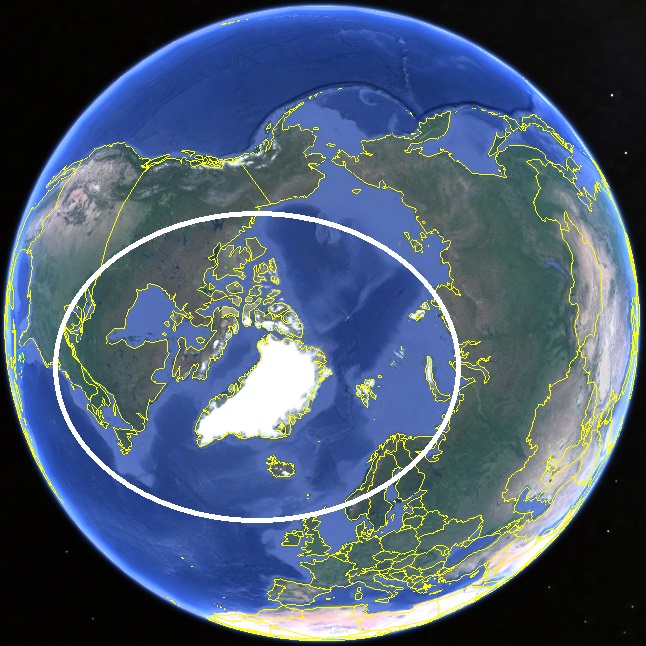
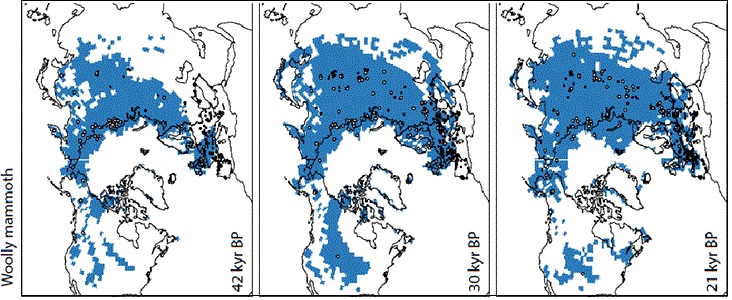

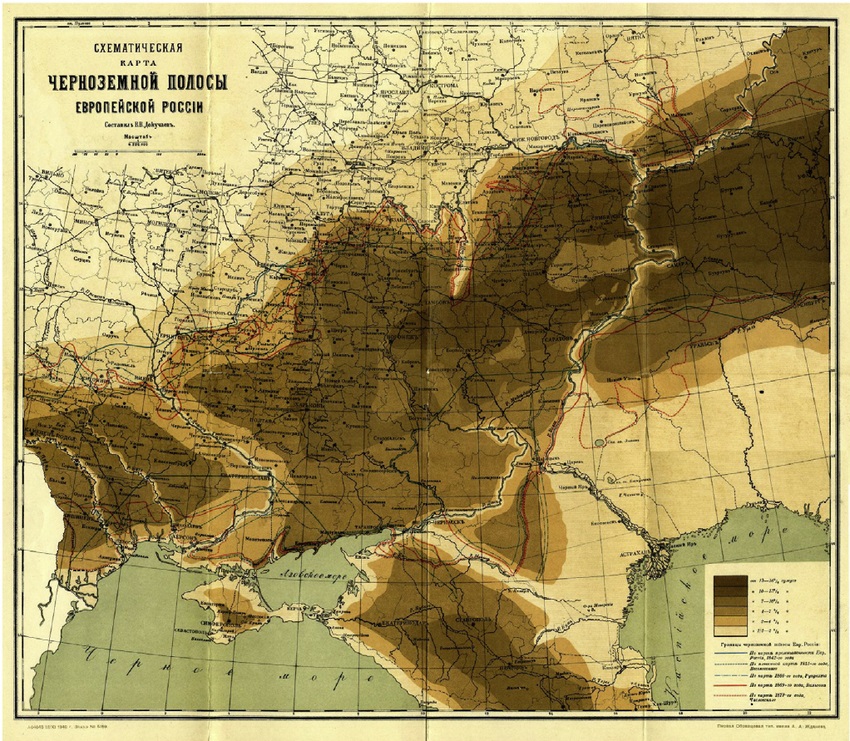
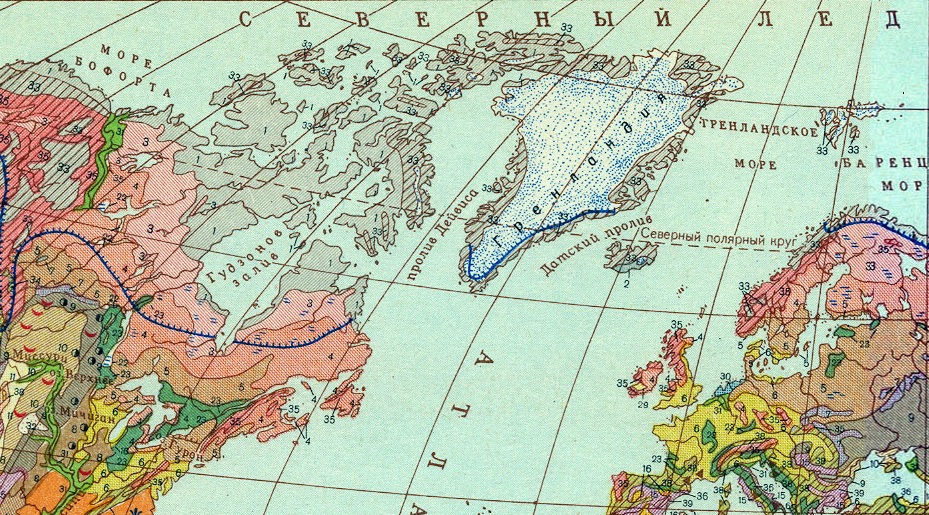
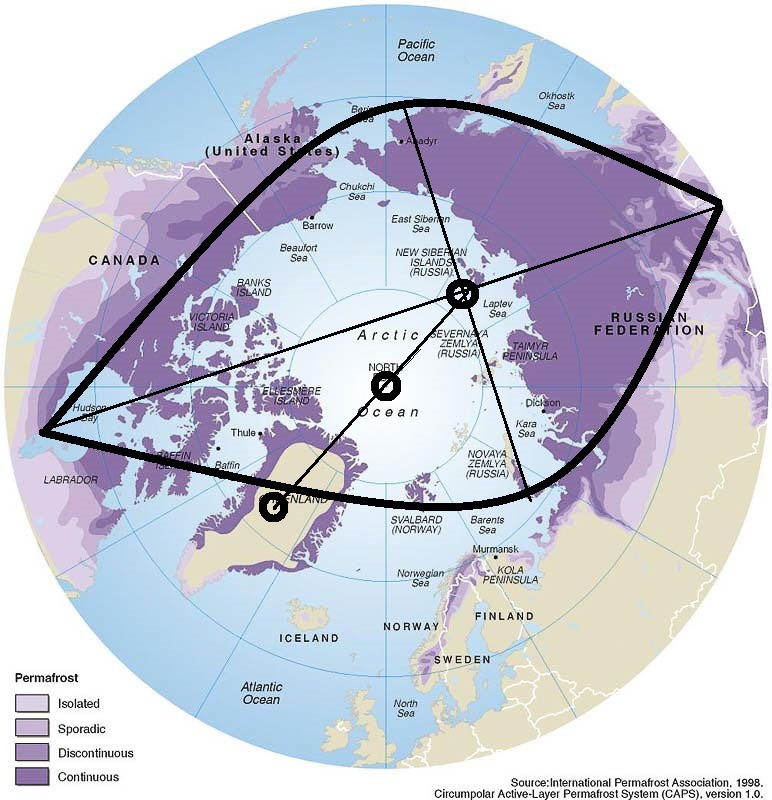
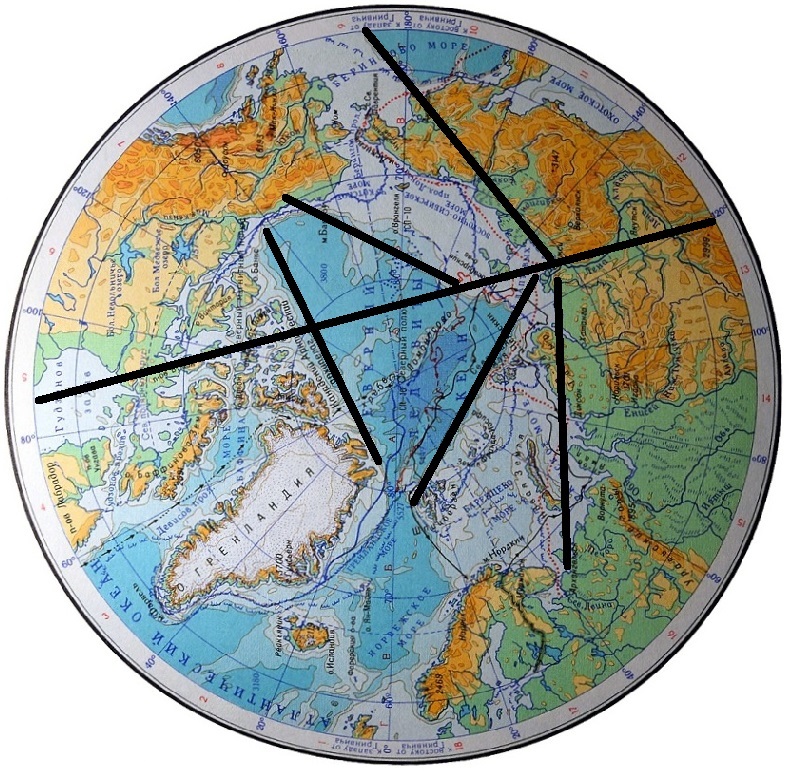
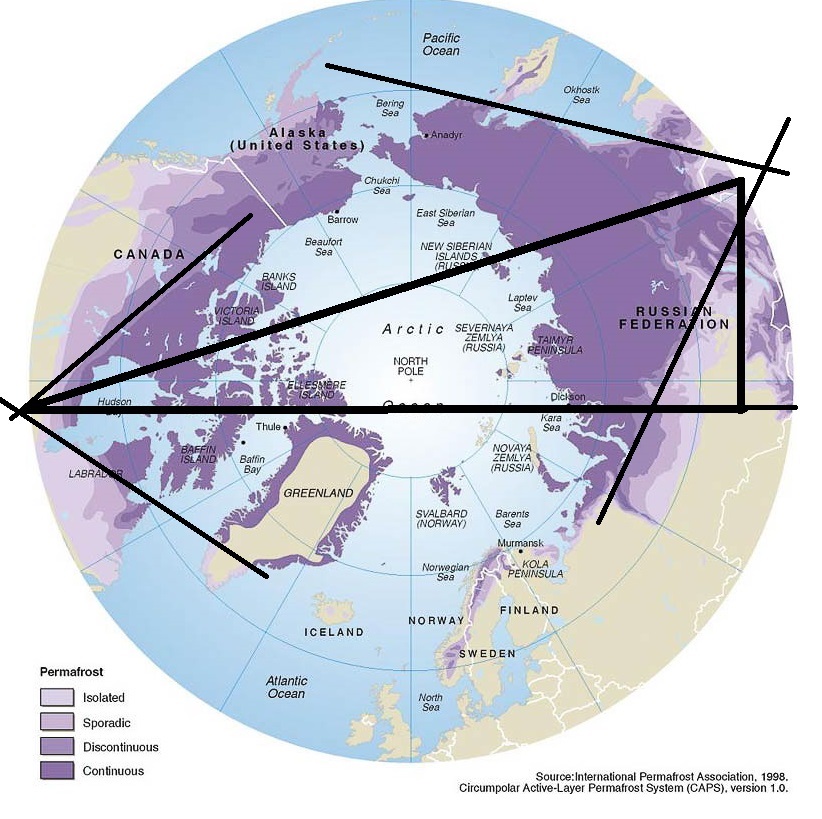
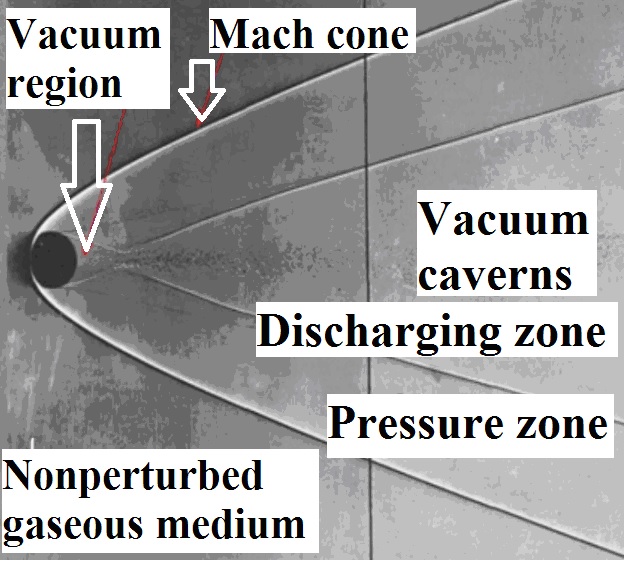
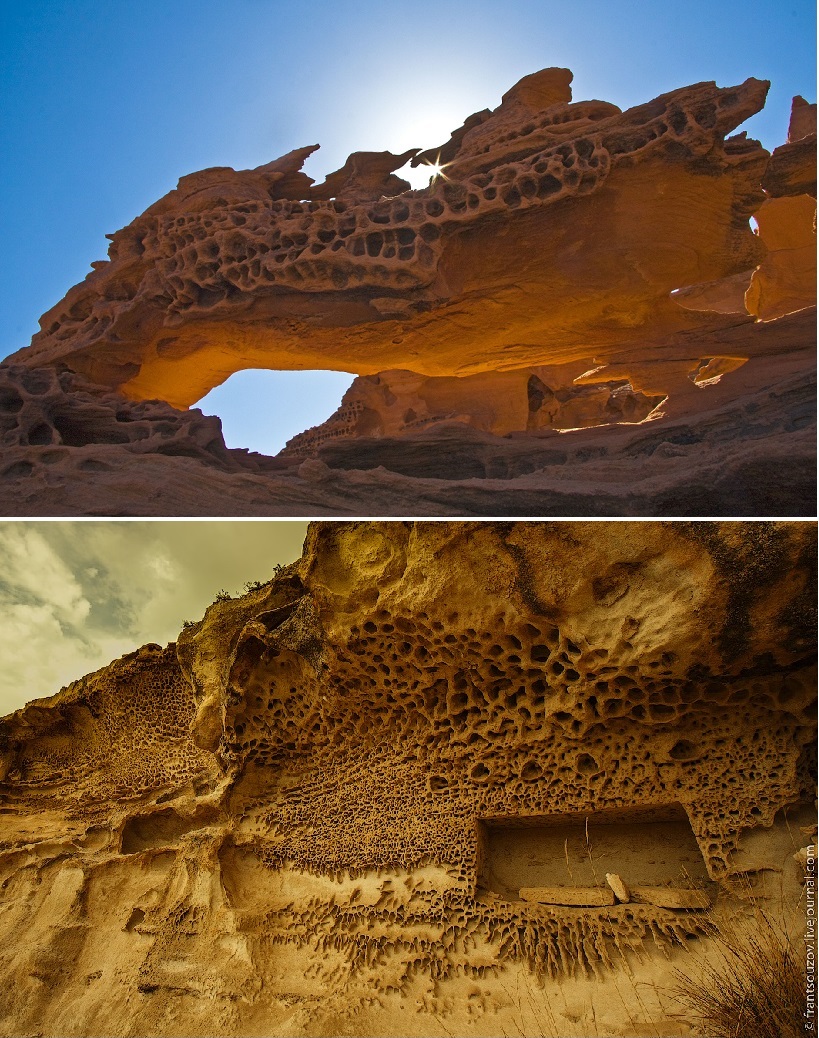
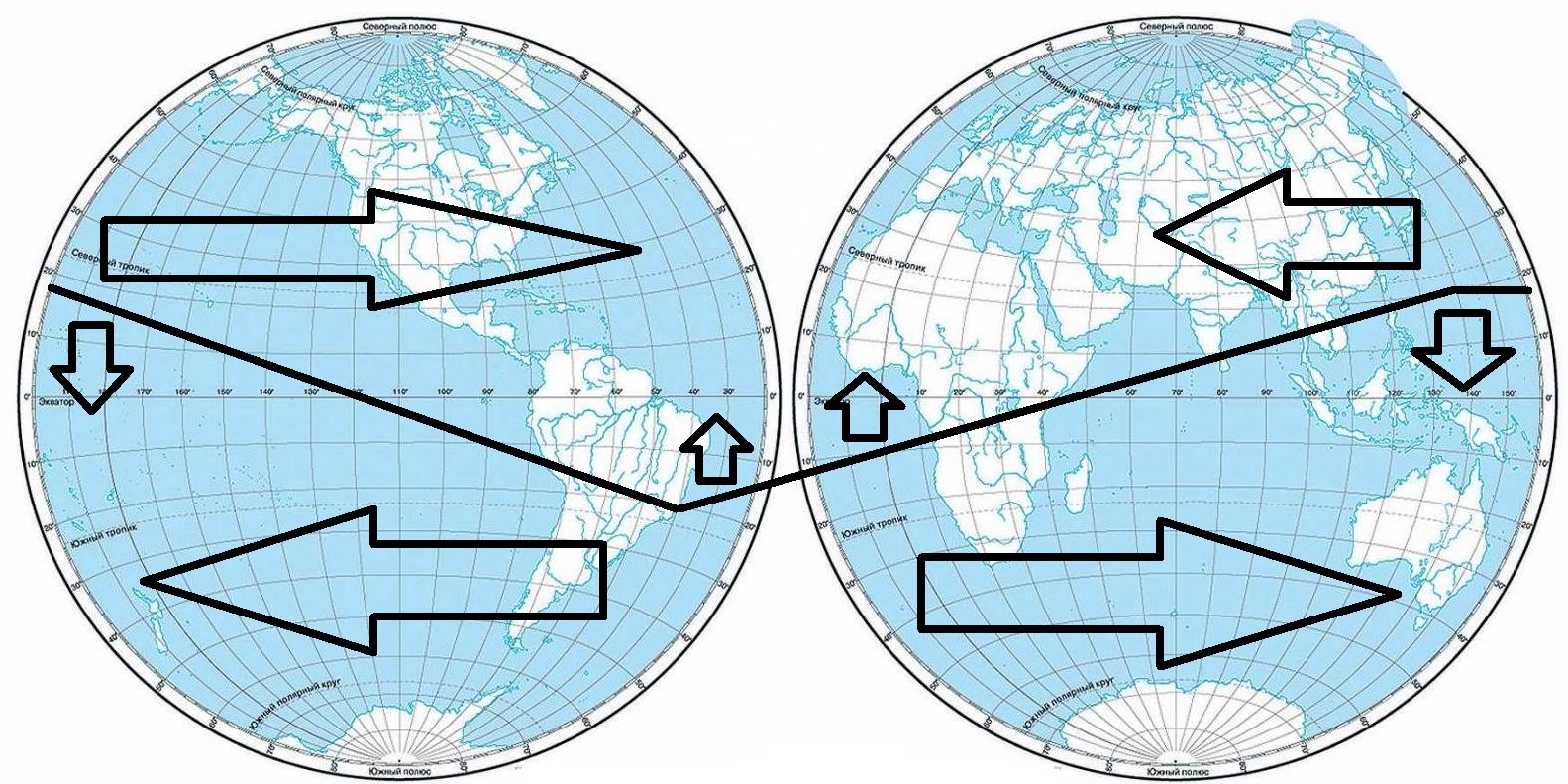
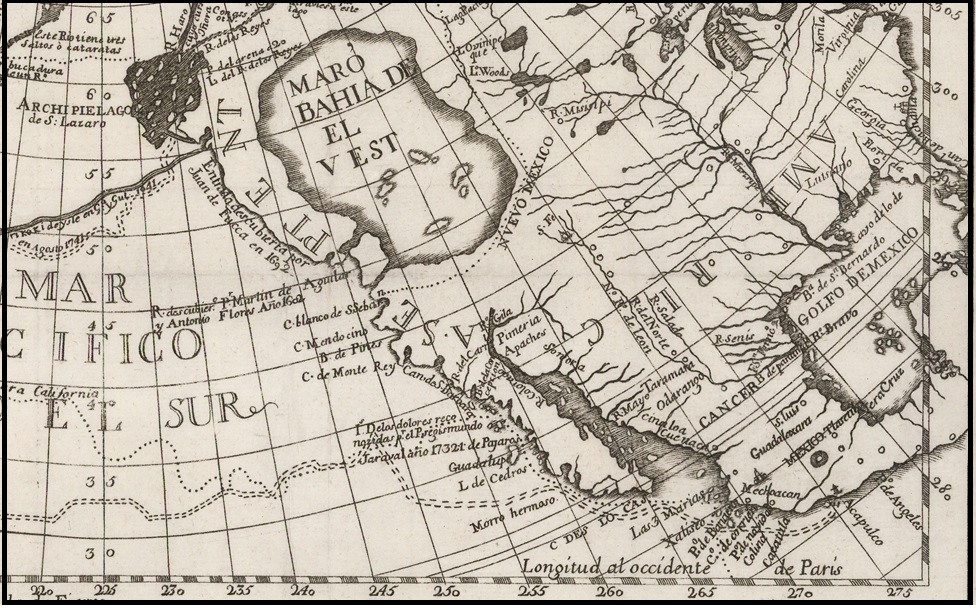
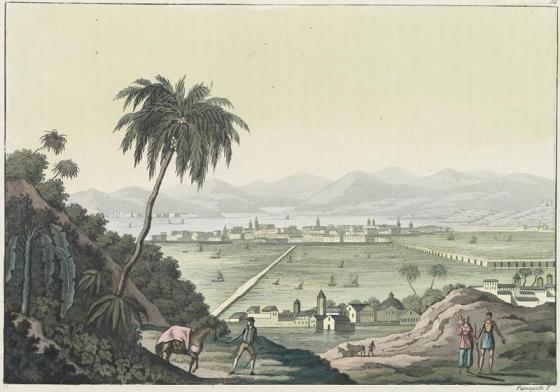


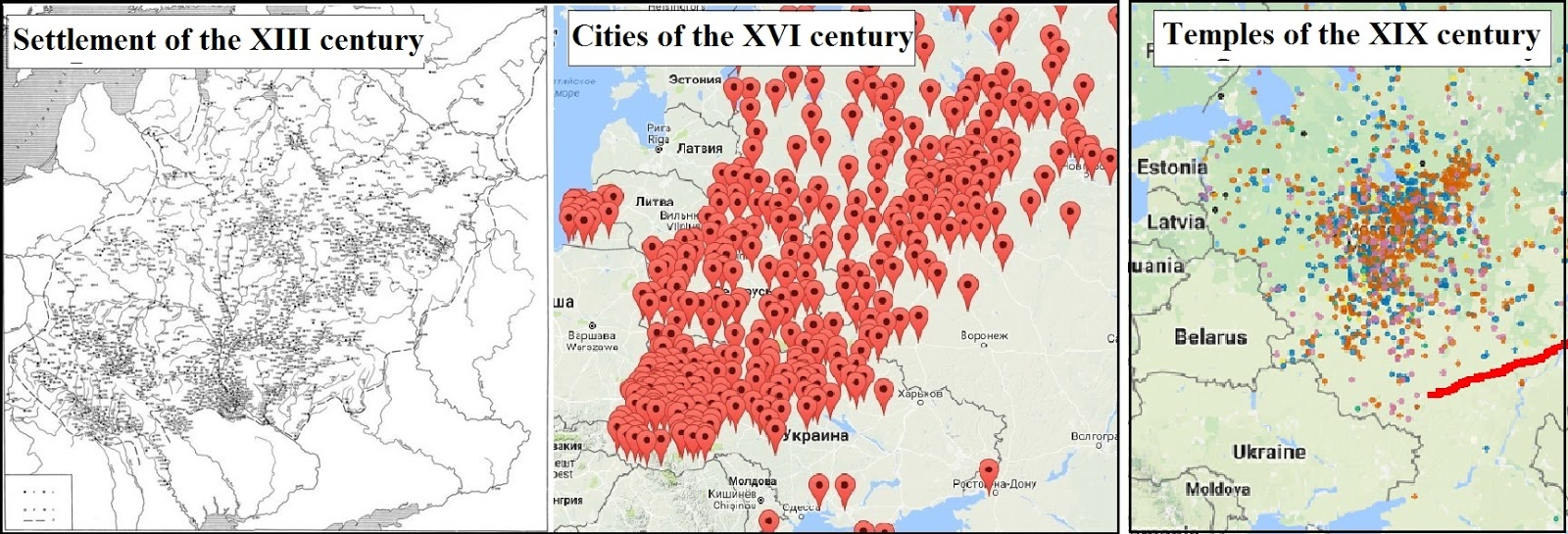
Tides is the result of the rotation of the Earth and whirlpools
Comments: University of Cambridge Forum
https://www.thenakedscientists.com/forum/index.php?topic=73127.0
Солидарен.